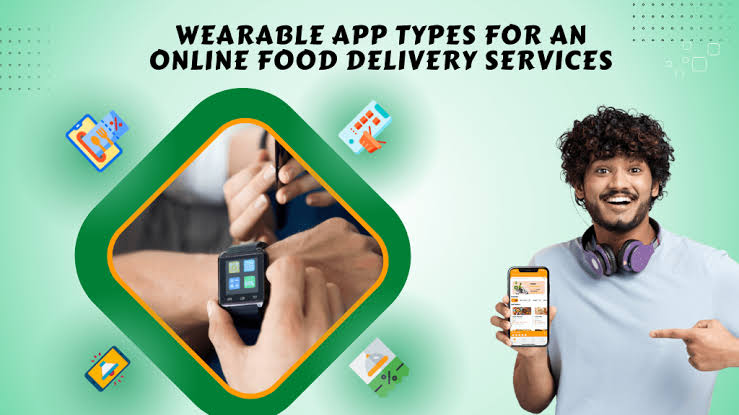Devices such as smartwatches and fitness trackers with digital services enable more streamlined. They create convenient and personalized experiences for consumers. This comprehensive exploration delves into how wearables are influencing food delivery industry and restaurant ordering processes. It examines the potential benefits. It also looks at the challenges associated with this technological shift.
Wearable technology encompasses devices worn on the body such as smartwatches, fitness trackers and augmented reality glasses. These devices are designed to collect and analyze data about users' activities. They also track health metrics and preferences. The primary objective of wearables is to provide users with real-time information and enhance their overall quality of life. In the context of food delivery and restaurant ordering wearables offer new layer of convenience and efficiency by enabling users to interact with digital platforms and services without need for traditional devices like smartphones or computers.
Integration of Wearables with Food Delivery Services
The integration of wearables with food delivery services is a relatively recent development that is changing the way people order and receive food. Wearable devices equipped with internet connectivity and application support can now interact directly with food delivery platforms, allowing users to place orders, track deliveries, and manage their food preferences with ease. For instance, users can browse restaurant menus, customize their orders, and make payments directly from their smartwatches or fitness trackers. This hands-free approach simplifies the ordering process and reduces the need for users to access their smartphones or computers.
Real-Time Notifications and Order Tracking
One of the most significant advantages of integrating wearables with food delivery services is the ability to provide real-time notifications and order tracking. Wearable devices can receive push notifications about order status updates, delivery estimated times, and special promotions. This ensures that users are always informed about their orders without needing to constantly check their phones. Additionally, real-time tracking features enable users to monitor the progress of their deliveries, providing greater transparency and enhancing the overall customer experience.
Personalized Recommendations and Preferences
Wearable devices are capable of collecting a wide range of data about users' preferences, dietary restrictions, and eating habits. By analyzing this data, food delivery platforms can offer personalized recommendations and tailored suggestions based on individual preferences. For example, if a user frequently orders vegetarian meals or has specific dietary requirements, the wearable device can automatically suggest suitable options from nearby restaurants. This level of personalization enhances user satisfaction and helps users discover new dining options that align with their tastes and needs.
Enhanced Payment Options
Wearable technology has also improved payment options for food delivery and restaurant ordering. Many wearables now support contactless payment methods, such as near-field communication (NFC) and digital wallets. This allows users to make payments quickly and securely without having to carry physical credit cards or cash. The convenience of contactless payments through wearables not only speeds up the transaction process but also reduces the risk of fraud and enhances overall security.
Impact on Restaurant Operations
The adoption of wearables in the food delivery and restaurant ordering sectors is not limited to consumer-facing benefits; it also has significant implications for restaurant operations. Restaurants can leverage data collected from wearable devices to gain insights into customer preferences, order patterns, and peak times. This information can be used to optimize menu offerings, streamline kitchen operations, and improve overall efficiency. For example, restaurants can adjust their staffing levels and inventory based on data-driven predictions, ensuring that they are better prepared to meet customer demand.
Challenges and Considerations
Despite the numerous benefits of integrating wearables with food delivery and restaurant ordering, there are several challenges and considerations that need to be addressed. One of the primary challenges is ensuring data privacy and security. As wearables collect sensitive information about users' preferences and activities, it is essential to implement robust security measures to protect this data from unauthorized access and potential breaches.
Additionally, the widespread adoption of wearables may require restaurants and food delivery platforms to invest in new technologies and infrastructure to support seamless integration. This includes developing compatible applications, ensuring interoperability between different wearable devices, and providing training for staff to effectively use these technologies.
Another consideration is the potential for technological limitations and compatibility issues. Not all wearable devices may support the same features or functionalities, which could lead to inconsistencies in user experiences. Ensuring that wearable technology is compatible with various platforms and devices is crucial for providing a smooth and cohesive experience for all users.
Future Prospects and Innovations
Looking ahead, the impact of wearables on food delivery and restaurant ordering is expected to continue evolving with advancements in technology. Future innovations may include the integration of artificial intelligence and machine learning to further personalize recommendations and enhance user experiences. Additionally, the development of new wearable technologies, such as augmented reality glasses and advanced sensors, may open up new possibilities for interactive and immersive dining experiences.
In conclusion, wearables are transforming the way people interact with food delivery services and restaurant ordering processes. By offering greater convenience, personalization, and efficiency, wearables are reshaping the dining experience and providing valuable benefits for both consumers and businesses. As technology continues to advance, the role of wearables in the food industry is likely to expand, leading to even more innovative and engaging solutions for ordering and enjoying food.
